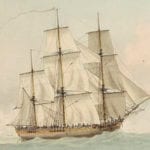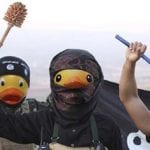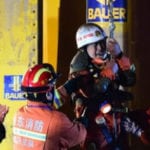 Humans
Humans  Humans
Humans  Movies and TV
Movies and TV The 10 Most Heartwarming Moments in Pixar Films
 Travel
Travel Top 10 Religious Architectural Marvels
 Creepy
Creepy 10 Haunted Places in Alabama
 History
History Top 10 Tragic Facts about England’s 9 Days Queen
 Food
Food 10 Weird Foods Inspired by Your Favorite Movies
 Religion
Religion 10 Mind-Blowing Claims and Messages Hidden in the Bible Code
 Facts
Facts 10 Things You Never Knew about the History of Gambling
 Weird Stuff
Weird Stuff 10 Cool and Creepy Facts about Collecting Tears
 Humans
Humans The Ten Most Lethal Gunslingers of the Old West
 Humans
Humans Ten Historic Men Who Deserve Way More Credit Than They Got
 Movies and TV
Movies and TV The 10 Most Heartwarming Moments in Pixar Films
 Travel
Travel Top 10 Religious Architectural Marvels
Who's Behind Listverse?

Jamie Frater
Head Editor
Jamie founded Listverse due to an insatiable desire to share fascinating, obscure, and bizarre facts. He has been a guest speaker on numerous national radio and television stations and is a five time published author.
More About Us Creepy
Creepy 10 Haunted Places in Alabama
 History
History Top 10 Tragic Facts about England’s 9 Days Queen
 Food
Food 10 Weird Foods Inspired by Your Favorite Movies
 Religion
Religion 10 Mind-Blowing Claims and Messages Hidden in the Bible Code
 Facts
Facts 10 Things You Never Knew about the History of Gambling
 Weird Stuff
Weird Stuff 10 Cool and Creepy Facts about Collecting Tears
 Humans
Humans The Ten Most Lethal Gunslingers of the Old West
10 Remarkable Tales Of Lost Relatives Who Resurfaced
Absence may make the heart grow fonder, but having a loved one vanish sickens the soul. When that kind of absence ails you, there’s no better remedy than having that loved one resurface. The families on this list were torn asunder by folly and horrifying happenstance and then scattered like puzzle pieces in a hurricane. But somehow, whether through surreal luck or dogged determination, they got pieced back together.
10 The Long Way Home
A fortune-teller once promised Saroo’s mother that she would see her son again someday. He had gone missing at age five after an ill-fated nap at a train station.
He was traveling home with his older brother when he seized an opportunity to sleep during a stopover. His brother was supposed to wake him when the train arrived home, but he awoke alone. His brother’s bisected body was found strewn across the tracks a month later.
Armed with nothing but a five-year-old’s innocence, Saroo boarded the first train he saw, thinking it would take him home. Instead, it brought him to Calcutta, some 1,200 km (750 mi) away from his native Khandwa, India.
Young and illiterate, Saroo lived as a beggar on Calcutta’s dangerous streets and grew accustomed to the uglier side of humanity. He learned how to identify potential child predators and treated trust as a luxury he couldn’t afford.
However, things started looking up when he landed in an orphanage. There, he came across a Tasmanian family who wanted to adopt him. Saroo, realizing that he couldn’t make his way home, jumped at the chance to live in Australia.
Australia offered a welcomed reprieve from the hardships of Calcutta, but his homesickness intensified with time. As an adult, he devoted himself to regaining the family he’d lost in India. Relying on Google Earth, his memories of home, and knowledge of Indian train speeds, he was able to pinpoint his hometown of Khandwa. In 2012, roughly 26 years after he vanished, Saroo set out to find his birth mother.
He eventually located his old home, but his mother had moved. Saroo pressed forward until he found someone who led him right to her. After 25 years with no indication that he was even alive, Saroo, in his own words, “just reappeared like a ghost.” His stunned mother could do nothing but grab him by the hand and take him home.
9 Gone But Not Forgotten
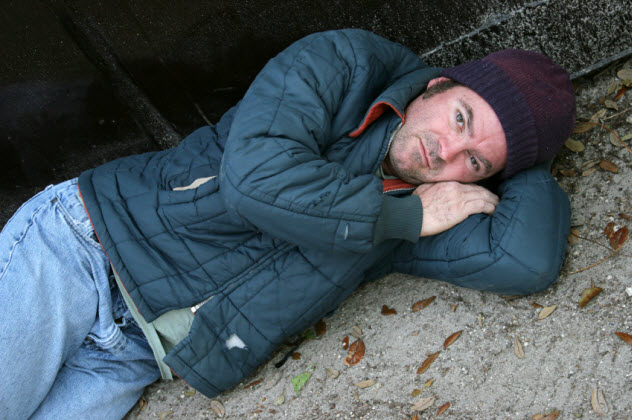
He couldn’t remember the faintest details of his life or how he ended up homeless on the streets of Chicago. He had no ID, and the closest semblance to an identity his addled brain could muster was the name “Jay Tower.” He sought refuge at the Pacific Garden Mission, where he sobbed on an employee’s shoulder in amnesiac despair.
Finally, one of “Jay’s” friends at the mission stumbled upon his true identity while perusing the America’s Most Wanted website. “Jay Tower” was actually Raymond Power of New York. He had been missing for almost seven months.
Power didn’t realize it, but he had a wife of 30 years, children, and a sister who were desperately hoping for his safe return. On August, 1, 2005, the 58-year-old lawyer had seemingly melted into the shadows after leaving work.
Credit card activity suggested that he had spent time in Pennsylvania and Ohio, but there were no physical traces of the man himself. It was anybody’s guess as to how or why he went missing. The answer, it seems, was all in Power’s head.
A Vietnam veteran and former police sergeant, Raymond had been marred by some of life’s grisliest horrors. In 2001, the gloom in his heart reemerged when he narrowly missed becoming a casualty of the 9/11 attacks by leaving work early.
For years, he was overwhelmed by the question of why he had left the building where so many others had perished. The pain apparently sent Power into a psychological tailspin. Sadly, bringing him home didn’t jog his memory. But Power’s sister, Susan, put things into perspective: “I think his family is just so delighted to have him back.”
8 The Doubles
It was a borderline Dickensian mix-up. In Colombia, two sets of identical twin brothers lived as fraternal twins after one sibling from each pair was accidentally switched at birth.
One of the misplaced children, Carlos Alberto Bernal Castro, excelled at school, partied regularly, and landed a lucrative accounting job. The other, William Canas Velasco, begrudgingly sacrificed educational opportunities to aid his family in arduous field work. He eventually became a grocery store butcher.
Fittingly enough, it all came to light with a case of mistaken identity.
William had always known Wilber Canas Velasco as his twin. In reality, his birth brother was a man named Jorge Enrique Bernal Castro. Jorge worked at an office in Bogota with a woman named Laura Vega Garzon. One day, Laura came face-to-face with William at his grocery store while visiting a friend, Janeth Paez, in another part of the city.
Laura was so struck by this doppelganger that she insisted William was actually Jorge moonlighting under an assumed name. Janeth, however, was incredulous. She had been dating William’s cousin and knew for a fact that he was just a kindly employee at her local market.
A month after the bizarre encounter, Janeth got a job in Laura’s building and spotted Jorge. Immediately, she understood the overwhelming confusion which had seized Laura upon seeing William. Their features, mannerisms, and even their gaits were uncannily alike.
Janeth and Laura thought it only fair to show William and Jorge photographic evidence of just how similar they looked. With that, the floodgates of truth began to open. Soon William and Jorge began digging deeper into each other’s lives and made a disturbing discovery. William’s brother, Wilber, looked exactly like Jorge’s brother, Carlos. All four had been born at approximately the same time in the same hospital.
William and Carlos had always felt out of place in their families, and now they received confirmation that they were cut from different biological cloths. The four men eventually accepted their new reality and awkwardly met after bouts of hand-wringing and hesitation.
DNA tests confirmed their already undeniable suspicions. They began learning about each other’s altered life trajectories and participated in a study about their likeness to their identical twins. With time, the men grew closer to each other, finding that each had not one twin brother but two.
7 The Piano
In summer 2015, a viral video from Sarasota, Florida, left Internet denizens positively misty-eyed. Pianos scattered throughout the downtown area offered a musical outlet to the public. That’s when a homeless man named Donald Gould became a star.
Gaunt and bushy-bearded, Gould’s unkempt appearance belied his tuneful touch. Playing an emotional rendition of “Come Sail Away,” he drew crowds of people. So moving was his performance that the NFL recruited Gould to play “The Star-Spangled Banner” in front of 68,000 people at Levi’s Stadium. Most importantly for Gould, his notoriety afforded him an opportunity to reach out to his son.
Gould hadn’t seen his son in 15 years. The former Marine had fallen on hard times after his beloved wife died in 1998. Grief drove him to drug abuse, and before long, he lost his young son to social services. His downward spiral accelerated, and Gould ended up on the streets.
Despite having lost nearly everything, he kept a firm hold of the talent he had honed in music school and while performing with the Marines. With some of that ability splayed across the Internet, Gould hoped that his son would take notice. As luck would have it, he did.
Gould’s 18-year-old son, Donnie, had seen the video of his father and agreed to speak with him via video chat. Donnie, who hadn’t seen his father since age three, shied away from a meeting in person but nonetheless wanted to touch base with the parent who’d been on his mind for years and out of touch for just as long.
Despite his misgivings, Gould couldn’t have been more pleased about being able to see his child and about how music had played a part in it. In his words: “Music took me around the world before I was 21, and somehow now, music has got me back together with my son.”
6 The Best Medicine
By the time he reached 83 years old, Frank Holland didn’t have many people to talk to. His wife had died eight years earlier, and most of his friends had died, too. These and other sorrows flooded his mind while he received treatment for skin cancer.
Thankfully, his loquacious nurse, Maryanne Smith, was happy to lend a friendly ear. Holland confided in Smith about the declining number of people in his life and about a sibling he hadn’t seen in 70 years.
That sibling was Frank’s elder brother, John Holland Jr. The pair was sired during the Great Depression, and their lives came with various trappings of hardship. Their father had scoured the country for work. Their mother, overwhelmed by the difficulty of juggling two children during an economic crisis, left Frank to be raised by a babysitter.
In turn, that person dumped him off at an orphanage. Frank’s father later retrieved him, at which point he was relocated to a children’s home where his brother lived. The brothers spent seven years together before instability struck again. Frank’s aunt popped up and took him to live with her. When he became an adult, he joined the military.
John and Frank had always hoped to find each other, but years of disappointment became decades. The Holland brothers might never have seen each other again if Frank hadn’t confided in Nurse Smith. She knew a lab assistant who had once been a private investigator.
The assistant, Gabrielle Albrecht, gladly employed her sleuthing skills to help Frank. Aided by Google and her own wits, Albrecht quickly hunted down John, allowing the brothers to hear each other’s voices for the first time since the 1940s. Several phone calls and a plane ride later, the brothers were laughing and crying together, thrilled that they had each other to lean on once more.
5 The Happy Coincidence
As a child, Holly Hoyle O’Brien once woke up sobbing, pleading with her adoptive parents. “I have a sister, we need to find her,” she implored. But when her family conferred with the South Korean orphanage from which Holly had been adopted, they found no evidence of a sibling. O’Brien, however, knew better.
Born Pok-nam Shin, Holly originally resided with her father and a half sister named Eun-Sook in South Korea. However, their brief time together was spoiled by their father’s uncontrollable drinking. Eun-Sook’s mother removed her from that volatile environment, leaving O’Brien to be raised by an incorrigible alcoholic. But this dynamic was also cut short when her father had a tragic encounter with an oncoming train. She was placed in an orphanage and eventually adopted by American parents.
O’Brien longed to reunite with Eun-Sook, but without a paper trail to track her sister, finding her seemed all but impossible. But impossibility rapidly transitioned into opportunity when she began working as a surgical nurse at a Sarasota, Florida, hospital. There, she struck up a fast friendship with Meagan Hughes.
Hughes was a physical therapy assistant who worked the same hours as O’Brien, and the two shared eerie similarities. Like Holly, Meagan was from South Korea and had even been born in the same city. She had lived with her mother for a time. But for reasons she couldn’t recall, she had also ended up at an orphanage before eventually being adopted by American parents. Her birth name was Eun-Sook.
It seemed entirely too good to be true, so the sisters left nothing to chance. A DNA test confirmed what Holly had known all along. She had a sister out there. And now, thanks to the craziest of coincidences, she had found her.
4 The Artificial Orphan
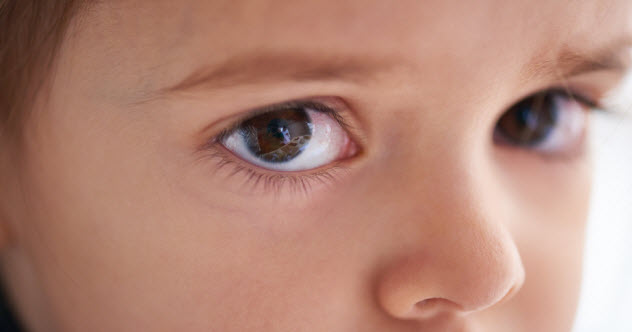
From the 1920s to the 1950s, the governments of Britain and Australia formed an unholy alliance. To bring “white children of good stock” to Australia, the nation took roughly 130 children from Northern Irish care homes and worked with Australian churches to raise them.
The youngsters had no say in the matter, and many suffered vile sexual abuse at the hands of Catholic overseers. Some were orphans. Others, like Paddy Monaghan, were simply lied to for decades.
In the 1940s, Monaghan made the journey to Australia at age 10. His mother had placed him in the care of nuns when he was just two weeks old, and a priest eventually recommended him for the migration program. Like most in his ward, Paddy ended up under the auspices of Australia’s Sisters of Nazareth, who tried to raise him as a good Catholic.
But despite the righteous tenor of their mission, these spiritual wives of Christ decided it was best to lie to Monaghan throughout his childhood. The nuns repeatedly told him that his entire family had died.
Paddy never bought this line of bunk, but he had no way of exposing the nuns’ lies. It took 46 years of searching to validate his doubts. In 2009, Monaghan uncovered a letter that his mother had written to the Sisters of Nazareth to place Paddy in their care. The nuns had invented his orphan status.
Even when he approached them decades later in 1997, they failed to disclose the existence of the letter. Had the sisters been honest then, Paddy might have been able to see his mother before she died in 1999.
The revelation brought bittersweet relief. He recalled later telling the nuns in a letter: “There will be a lot of you people down in hell.” Although it was too late to meet his mother, Paddy had hundreds of other relatives out there. Some of them were more than happy to welcome their newfound kin.
3 The Three Twerps
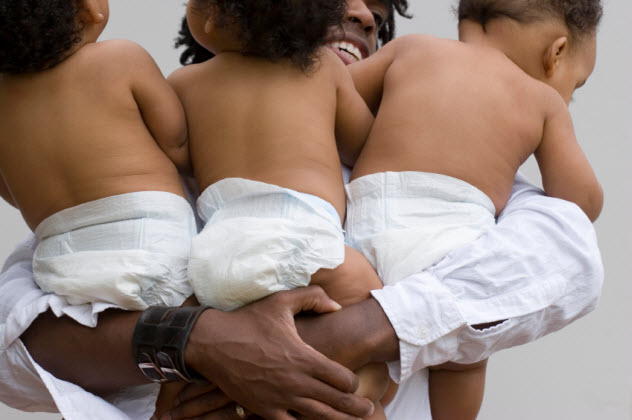
Triplets Angela, Betty, and Carol Kniseley became Susan Walters, Debbie Custer, and Janna Kach in adulthood. To their older brother, Orlando, they were simply “the twerps.”
For more than five decades, the trio had been incommunicado with Orlando. Their lengthy separation came courtesy of their father (Orlando’s stepfather), Calvin Kniseley. For years, Calvin had tried to navigate the impossibly thin tightrope of being a convicted bank robber and escaped inmate who needed to provide for a wife and eight children while keeping a low profile. Ultimately, he lost his balance.
Fearful of discovery, Kniseley dragged his wife and children across several states. Eventually, he buckled under the pressure and abandoned the family altogether. The departure left the children’s mother psychologically crippled and unable to properly care for her children.
At age 13, Orlando made it his top priority to look after the helpless triplets. But several weeks later, police swooped in and placed the children in foster care.
Plans to send all of the children to relatives in other cities were derailed when the triplets’ foster mother objected under the pretense that they had ear infections and would have to wait until they recovered. They never arrived.
Orlando spent much of the next 52 years traveling “all over the world, looking for [his] sisters, looking for the meaning of things,” but he consistently came up empty-handed. Luckily, serendipity ultimately intervened.
The twerps never forgot their brother, but they did forget his name. That changed once the granddaughter of their former foster mother reached out to them. She had been rifling through old papers when she stumbled upon letters that Orlando had written to the twerps’ foster mother.
Now that the sisters knew their brother’s name, they could finally bridge the 50-year gulf between them. Orlando and the triplets enjoyed tear-filled reunions and communicated weekly. But once again, their time together was short-lived. Six months after Orlando’s lengthy search happily concluded, he died.
2 The Unexpected Run-In

Phidel Hun’s earliest years were marred by misfortune. When he was a baby, his right thumb and pinkie were seared together after he grabbed a hot poker. His parents went missing during the Khmer Rouge’s 1975 uprising, and he never saw them again. That left Hun and his two brothers in the care of an uncle. But he, too, vanished. Like Phidel’s parents, that uncle presumably died under Pol Pot’s nightmare reign.
What happened to Hun after his uncle’s disappearance was something of a grim mystery. His history, however, isn’t entirely blank. He survived a Khmer Rouge concentration camp for a number of years but remained reticent about the horrors he may have witnessed there.
Then he inexplicably appeared at a refugee camp in eastern Thailand. Hun was four or five years old, and the closest thing he had to a family was memories of his brothers. Unfortunately, he had no way of reaching them. They were under the supervision of a surviving uncle, Hanyou Gau, who ultimately whisked them off to America.
No one in Hun’s family had the faintest idea where he was until a relative visited his refugee camp looking for someone else. Phidel’s distinctive hand deformity gave away his identity immediately. The surprised relative contacted Hanyou Gau, who began corresponding with the child.
Determined to reunite Hun with his brothers, Gau beseeched a US senator from California and New York’s International Relief Committee to help him rescue Phidel from the impoverished existence he led as a refugee. It took two years, but the determined group persevered and obtained special clearance for Hun to enter the US.
Phidel was greeted at Los Angeles International Airport by emotional relatives and a cavalcade of reporters eager to capture his first moments on US soil. He spoke no English and recoiled from the glut of attention he was receiving. But despite the whirlwind atmosphere, he was happy. Now he could go to school. Now he could meet his family.
1 The Lost Boy
As a child, Peter Kuch went by the name Bior Kuc Monyroor. For the first seven years of his life in the Sudanese village of Ater, things were blissfully simple. He went to school and helped his father tend cattle and goats. When he turned eight, clashes between northern and southern Sudan upended this idyllic existence. As he slept, quiet was soon overtaken by bullets and the screaming of abducted women.
Kuch jumped over corpses and fled the village. He became one of Sudan’s Lost Boys, the thousands of wandering children forced to travel for weeks amid deadly violence. He subsisted on wild fruit while others around him died of dehydration and starvation. Eventually, Peter and other children made their way to Ethiopia, where they found relief from gunfire but not hunger. As Kuch later wrote, “We were so hungry that if a single grain of corn fell on the ground, 10 people would fall to the ground and fight for it.”
The United Nations eventually brought food, but Ethiopia was soon ravaged by its own war. Kuch migrated back to Sudan, where bloodshed and starvation awaited. Refugees were constantly attacked. Some took to the water for salvation and were eaten by crocodiles. Kuch stuck to land, where he walked for hours daily and had to sell his clothes for food. Thankfully, the Red Cross and UN rescued him.
In 2001, Peter moved to the US, having learned English through action movies. He eventually earned a degree, found work, and started a family. He also joined the US Army to show gratitude to the country that had given him so much.
Despite these achievements, Kuch still thought of his lost family. In 2003, he discovered that his parents and siblings had survived the blood-soaked night in Ater. But plans to see them were constantly hindered. Eventually, retired Army veteran James Ytuarte heard of Kuch’s story and decided to help. He tried to raise money for a trip, and when that failed, he paid for it himself.
It took 28 years and the kindness of strangers for the little boy from Ater to see his family again. But for the 10 days he spent with his family at a Ugandan refugee camp, Kuch was able to fill “a hole that had been left in his life.”

